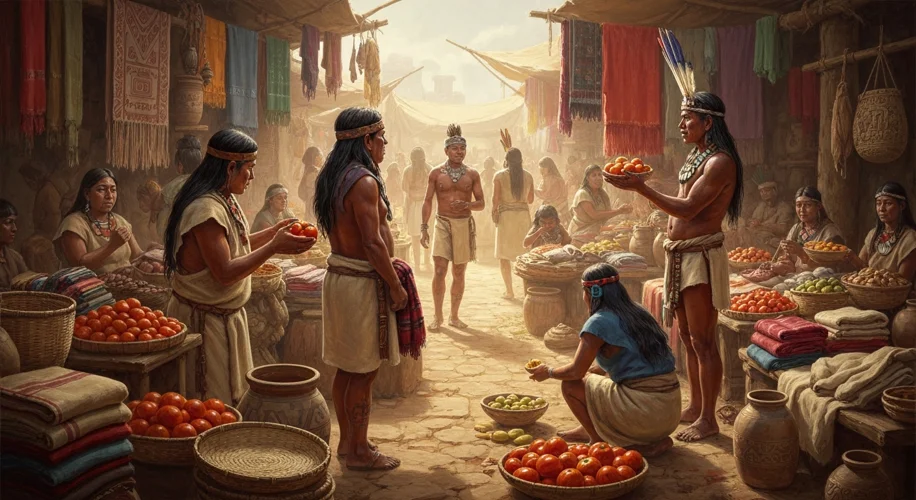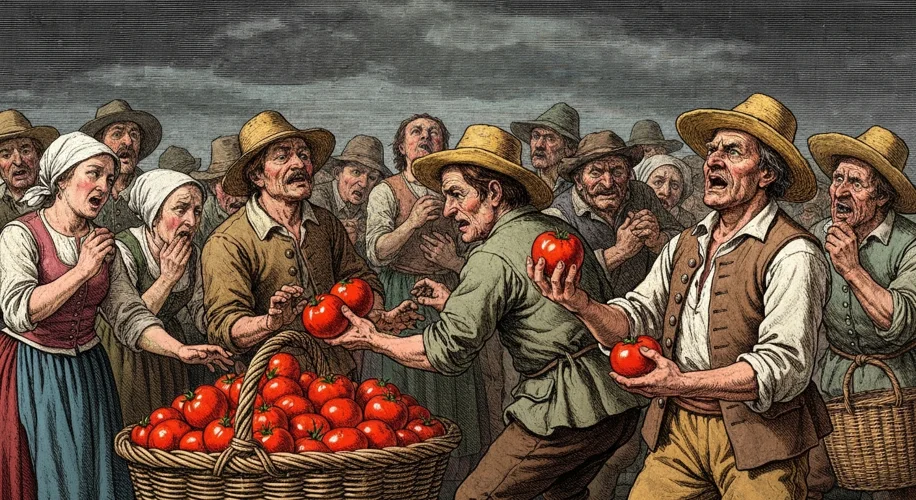Imagine a world without the vibrant splash of red in your pasta sauce, the juicy burst in your salad, or the tangy sweetness of ketchup. For centuries, this was the reality for much of the globe, all thanks to a humble fruit with a dramatic past: the tomato.
Today, it’s hard to fathom that this ubiquitous culinary staple was once viewed with profound suspicion, even fear. Its journey from the lush highlands of South America to the dinner tables of Europe and North America is a tale of cultural misunderstanding, botanical prejudice, and ultimately, triumphant acceptance.
An Andean Offering, A World Away
Our story begins not in the sun-drenched fields of Italy, but high in the Andes mountains of South America, where wild tomatoes, small and potent, were first cultivated by indigenous peoples like the Incas and Aztecs. They called it xitomatl, meaning “plump thing with a navel.” These early varieties were likely quite different from the beefsteaks and cherries we know today, but their essence – a bright, acidic, and flavorful fruit – was already present. For millennia, these tomatoes were a cherished food source, a gift from the earth, integral to the diets and cultures of the Americas.

The Voyage Across the Atlantic: A Fruit of Suspicion
Everything changed with the arrival of European explorers in the 16th century. When Spanish conquistadors encountered the tomato, they brought it back to Europe, unaware of the culinary revolution it would eventually spark. However, the European reception was far from warm. Several factors contributed to its initial rejection:
- Botanical Classification: Tomatoes belong to the nightshade family (Solanaceae), which includes many poisonous plants like belladonna and mandrake. European botanists, lacking the context of their Andean cultivation, naturally associated the tomato with its toxic relatives.
- Appearance: The bright red color, so appealing to us now, was interpreted by some as a sign of danger or ill omen. Its slightly acidic taste and soft texture were also unfamiliar and off-putting to palates accustomed to more robust, earthy flavors.
- Cultural Association: The wealthy and influential classes in Europe often ate off pewter plates. Tomatoes, being acidic, would leach lead from these plates, causing lead poisoning. Since the wealthy were often the first to adopt new foods, and they were getting sick, the tomato was unfairly blamed.
Thus, the tomato became known as the “poison apple” or “wolf peach” (pomo d’oro in Italian, meaning “golden apple,” a name that perhaps hints at an early, albeit hesitant, appreciation for its color, or possibly its yellow-fruited wild ancestors).
A Slow Bloom in European Gardens
For nearly two centuries, the tomato was largely relegated to ornamental gardens. It was admired for its attractive, vine-like growth and its exotic, glossy red fruits, but rarely eaten. It was seen as a botanical curiosity, a decorative plant rather than a foodstuff.
Italians, particularly in the southern regions, were among the first to cautiously begin incorporating the tomato into their cuisine, likely in the 18th century. The warmer climate and the practical need for resourceful food preparation may have played a role. The development of new culinary techniques and a growing willingness to experiment with foreign ingredients slowly chipped away at the ingrained fear.
North America’s Hesitation and eventual Embrace
Across the Atlantic, the United States also harbored deep-seated suspicion. Early American settlers, many of them English in origin, inherited the European prejudice. Thomas Jefferson, a keen gardener and experimenter, was one of the few who cultivated and ate tomatoes in the late 18th century, but his acceptance did not immediately translate to widespread adoption.
The popularization of the tomato in America is often attributed to a few key moments and individuals:
- Colonel Robert Gibbon Johnson: Legend has it that in 1820, Johnson publicly ate a basket of tomatoes on the courthouse steps in Salem, New Jersey, to prove they were not poisonous. While likely apocryphal, this story reflects the prevailing fear and the eventual shift in perception.
- Italian and Spanish Immigrants: As immigration from Southern Europe surged in the late 19th and early 20th centuries, so too did the tomato. These immigrants brought their rich culinary traditions, introducing dishes like pasta with tomato sauce and pizza, which gradually won over American palates.
- Canning Technology: The development of reliable canning techniques allowed tomatoes to be preserved and transported, making them accessible year-round and across the country. This innovation was crucial in moving the tomato from a seasonal garden crop to a pantry staple.

The Triumphant Return: A Culinary Revolution
By the late 19th and early 20th centuries, the tide had decisively turned. The tomato had shed its poisonous reputation and was embraced for its versatility, its refreshing acidity, and its ability to enhance a vast array of dishes. From humble beginnings as a wild Andean plant, it had become a cornerstone of cuisines worldwide.
Today, the tomato is a global phenomenon, cultivated in countless varieties and cherished for its nutritional value and incredible culinary flexibility. It graces everything from simple salads to complex sauces, from sandwiches to salsas. Its journey is a testament to how deeply ingrained cultural beliefs can be challenged, and how, with time, curiosity, and culinary innovation, even the most feared foods can find their rightful place on our plates, becoming symbols of comfort, flavor, and global connection.
So, the next time you savor a slice of ripe tomato, remember its dramatic past – a journey from a potentially deadly “poison apple” to the undisputed king of the culinary world.

